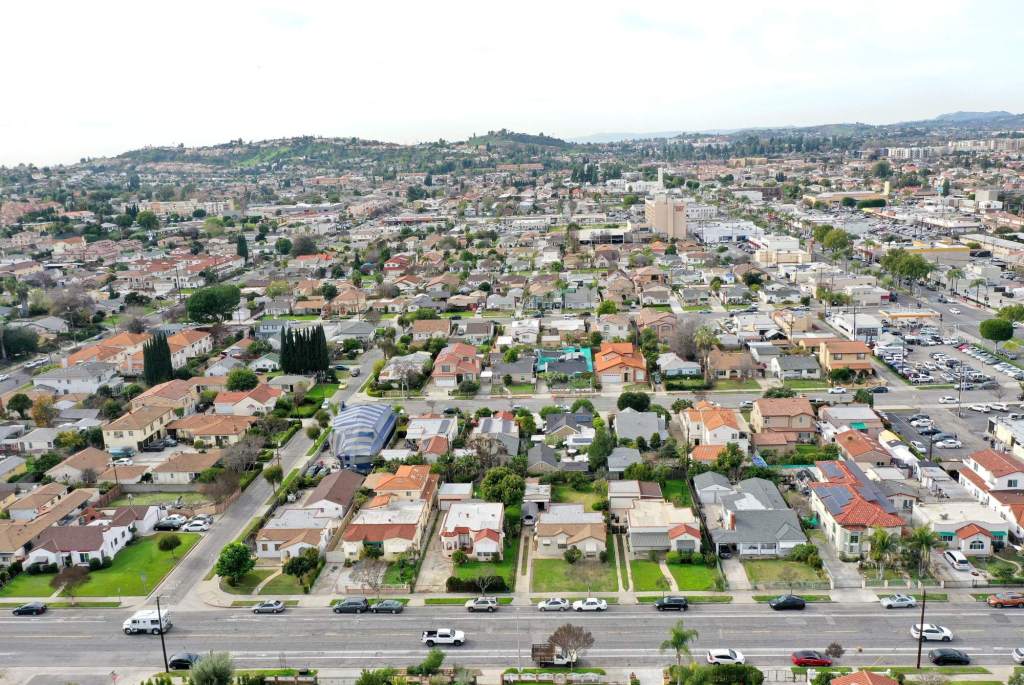
What exactly is stagflation and how does it affect housing and mortgage rates?
Stagflation is a combination of high inflation (inflation is a general increase in prices creating reduced purchasing power), rising unemployment and slow economic growth, no economic growth or negative economic growth.
As an aside, stagflation is different from a recession. The definition of a recession is two consecutive quarters of negative Gross Domestic Product.
How can we find ourselves in stagflation?
In a word, tariffs. President Donald Trump’s tariffs ultimately create a tax on consumer goods and services because those additional duties will be passed to the consumer. We also have a brewing trade war with China. These events may put the U.S. into the stagflation trajectory.
“The U.S. has yet to deal with the huge inflation problem. Our national debt is $36 trillion, that’s 720% of revenue,” said Michael Pento, president and founder of Pento Portfolio Strategies. “These tariffs are the largest tax increase since 1981.”
“Prices get raised and wages increase during stagflation. Then you have a wage, price spiral,” said Ted Tozer, former Ginnie Mae president under President Barack Obama. “I hope they back away from these tariffs. Consumers get hurt, no matter what.”
On top of everything, the dollar is plummeting against other currencies. A weak dollar can add to stagflation pressures. It takes more dollars to purchase foreign goods and services when the dollar is weaker. This raises costs, driving retail prices even higher.
So, what happens to mortgage rates during stagflation?
Mortgage rates go up. Lenders demand a higher yield because today’s dollars will be worth less in the future.
Obviously, if mortgage rates move higher, buying power is reduced because house payments become more expensive against a stable monthly income.
What happens to home prices?
Home prices could rise substantially, like they did during periods of stagflation in the 1970s and 1980s. Building materials and land costs more.
Will we see any opportunities?
There might be some real bargains out there. It’s sad to say, but those who lose their jobs may be forced to sell their homes.
What should a consumer do?
First and foremost, only buy a home or rental property if you are financially secure. There is always a chance home prices don’t soar, like the 70s and 80s when interest rates were extremely high.
Be sure to protect yourself, too.
If you own a home now and are nervous about the financial future — like you might be losing your job — it’s best to prepare ahead of time.
Get a home equity line-of-credit, in case of emergency. Look into borrowing from your retirement fund to keep going. If possible, think of ways to hang onto your home. Maybe you can borrow money from a family member.
What is the cure for stagnation?
Fed Chairman Jerome Powell is in a difficult position. He can raise short-term interest rates to slow the economy even further, bringing prices under control and snuffing out inflation. But if he does that, unemployment is going to ratchet up even more.
If Powell lowers short-term interest rates, hiring should increase, reducing unemployment. If he does that, he’s also pouring gasoline on the inflation fire.
As the thinking goes, it’s more important to snuff out inflation than to reduce unemployment.
It’s difficult to predict if rates go up a little bit or a lot should the economy get the stagflation bug. In the 1970s and 1980s, our economy had a bad dose of stagflation with interest rates over the moon.
According to Freddie Mac data, the average 30-year fixed mortgage topped out at 18.44% on Nov. 6, 1981. Since then, rates mostly fell until permanently reaching single digit status of 9.93% on Nov. 23, 1990.
Rates bottomed out at 2.65% on Jan, 7, 2021. Since then, they’ve been largely moving up. Today, the current Freddie Mac rate stands at 6.83%.
Freddie Mac rate news
The 30-year fixed rate averaged 6.83%, 21 basis points higher than last week. The 15-year fixed rate averaged 6.03%, also 21 basis points higher than last week.
The Mortgage Bankers Association reported an 8.5% mortgage application decrease compared with one week ago.
Bottom line: Assuming a borrower gets the average, 30-year fixed-rate on a conforming $806,500 loan, last year’s payment was $146 more than this week’s payment of $5,274.
What I see: Locally, well-qualified borrowers can get the following fixed-rate mortgages with one point: A 30-year FHA at 5.875%, a 15-year conventional at 5.625%, a 30-year conventional at 6.375%, a 15-year conventional high balance at 5.99% ($806,501 to $1,209,750 in LA and OC and $806,501 to $1,077,550 in San Diego), a 30-year high balance conventional at 6.75% and a jumbo 30-year fixed at 6.875%.
Eye-catcher loan program of the week: A 40-year fixed rate mortgage, interest-only for the first 10 years at 6.75% with 1 point cost.
Jeff Lazerson, president of Mortgage Grader, can be reached at 949-322-8640 or jlazerson@mortgagegrader.com.
Originally Published:



